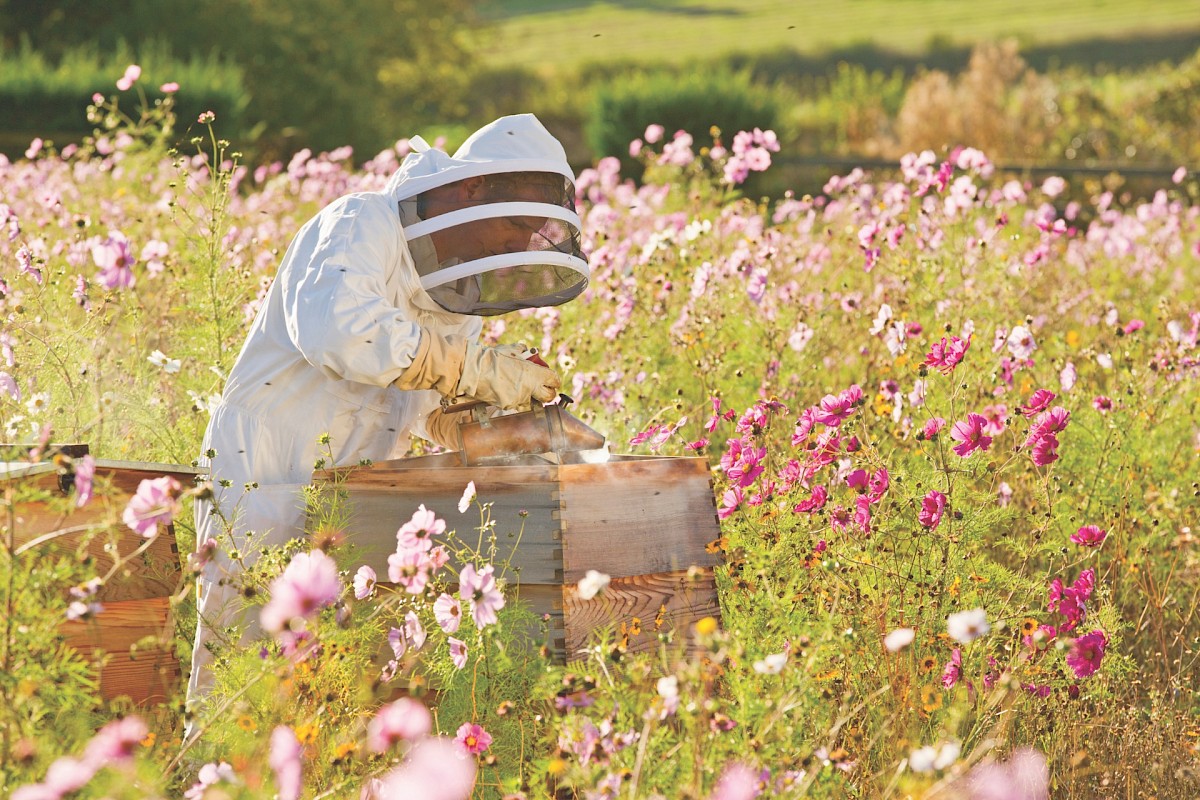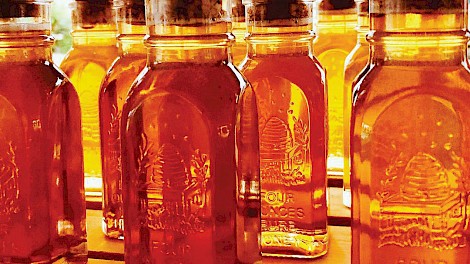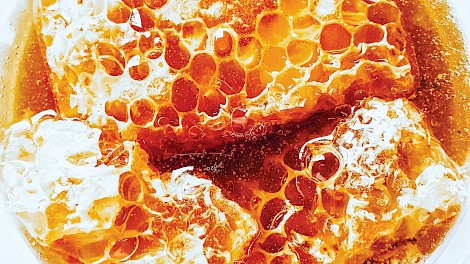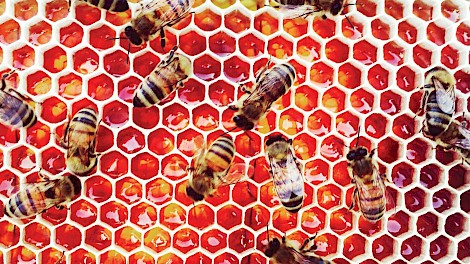Voice of the Garden
It is incredible how God uses unique life experiences to direct our paths. If we pay attention, He can lead us on the very best journey. Beekeeping has been precisely that for the founders of Balm and Honey Farm, Brin and Matt Nichols. Though it is not their full-time job, the hum in the garden has become their passion.
It all started when Brin, a former news reporter in the Dallas area, covered a story on bees. “I worked for CBS News in Dallas, and I was assigned a story about the decline of bees, and it was just one of those stories that had an impact on me. Within the daily grind of the news business,” she said, “you probably forget 99% of the stories you do, but that one never really left me. As I transitioned out of that career and moved back home, I started thinking about it more.”
As fifth-generation residents of Cass County, Texas, farming might not come as a total surprise to those who know them best. Still, as first-generation beekeepers, they have had to work hard to learn all they know about bees. The Nichols didn’t know any beekeepers when they got started, so they had to do a lot of research in the beginning. “I bought my first hive off of eBay around 2007,” she said. “I was so nervous. It took me three years to actually get bees in it. Once I did, I was hooked for life.”
What comes with a hive? Can you just order one? These are questions that might initially come to mind for a novice beekeeper. The answer is “Yes!” Hives can be ordered online because, technically, a hive is just a box. “It comes unassembled, and you put it together like you would Ikea furniture,” Brin explained. “It sat assembled in my backyard, and people would stop now and then and say, ‘Oh, you have bees!’ and I would reply, ‘Not yet.’”
To raise bees, you set up the hive and can then get a swarm by removing them from an unwanted location or buying what is called a package. Unlike purchasing a hive from eBay, buying a package is a more in-depth process. “They’re sold by beekeepers in the area. I found a guy in Naples, Texas,” Brin explained, “and he sold me a package and brought the bees to me. And that is how I first started.”
In her beekeeping research, which is technically called apiculture, Brin discovered a beekeeping association in Mount Pleasant, Texas, and started attending meetings, allowing her to reach out to the beekeeping community for guidance. She also met a fellow female beekeeper from Texarkana. One night, while talking, they decided to start an association in Texarkana. Brin is now one of the founding members of the Texarkana Beekeepers Association. “The association meets regularly and is growing like crazy. It evolved slowly, but there was no turning back once it did,” she said.
There are several factors to consider when getting started. For example, limiting the variety of bees you raise to those found naturally in your area is important. “Especially with our heat and humidity, we have to be very careful about the varieties of bees that we bring to the area so that they can tolerate our harsh summers. We actually have two varieties [at our farm] right now,” she explained. “Our primary bee is the Southern Bred Italian bee. They are very gentle and pretty good honey producers. The other variety that we are raising is called a Saskatraz, and they are also very gentle. So gentle you could walk up to a beehive, open it, and let them crawl on you, and they don’t sting.” While Brin has had one experience that sent her to the emergency room, her normally docile bees can usually be trusted. As a result of their gentle temperament, Matt rarely wears a suit, even when checking hives and gathering honey.
Bees learn to recognize their keepers. “Science tells us that bees can actually distinguish faces and even learn to recognize voices,” Brin explained. “The more we interact with them, the gentler they become and are now to the point where they really just ignore us,” she said. “Whenever we start pulling out frames of honey, they can get a little aggressive, but even though they aren’t thrilled, they’re still gentle. They’re totally chill if we’re just checking on them or doing general maintenance in our hives.”
“We are very conscientious beekeepers,” Brin explained. When harvesting honey from their bees, the Nichols always leave plenty of honey in the hive. “We do not [chemically] treat our hives, and we only take the amount of honey that we can safely harvest in order to give them enough food stores to raise their young and get through the summer drought and then the winter,” she said.
Along with gathering honey, part of beekeeping is splitting the hives. The Nichols had 19 hives, but they recently started “splitting season,” which will likely result in doubling that number. Because of the bees’ nature, worker bees build swarm cells for new queens each spring. The existing queen will quit laying eggs and lose weight to prepare for flying. She leaves the hive when she is ready, and approximately half of the colony goes with her. During this season, the beekeepers help with splitting. They determine which hives are best for producing new bees and which hives are best for producing honey.
“Bees are kind of like people in that some of them are healthier, and they’re better housekeepers than others. So, some hives we open are so clean, and the bees are really gentle, and maybe they’re not the best honey makers, but they’re so easy to work with and have a high tolerance for pests. We would generally designate those hives as the ones we want to use to raise bees,” explained Brin. “And then, every once in a while, you will open a hive, and it will be full of honey from top to bottom. You’re going to say; these are clearly my honey hives. So, there [are] some bees that are just better at making honey than others.”
The Nichols truly are some busy bees like the ones in their hives. Brin works in the oil and gas industry full-time, and Matt teaches at Hughes Springs ISD. They spend mornings before work, evenings and weekends tending to their growing farm, including a plethora of vegetables and animals. They also give hive tours, teach classes on beekeeping, bottle honey, make candles, conduct bee removals, and spend Saturday mornings at local farmers’ markets. Though their days are filled with other careers, other animals and growing a variety of produce, their passion for beekeeping can be summed up in a quote by Elizabeth Lawrence found on their website, balmandhoneyfarm.com.
“The hum of bees is the voice of the garden.” And at Balm and Honey Farm, what a beautiful voice indeed.
BEE FACTS
Almost 90% of wild plants and 75% of leading global crops depend on animal pollination. One out of every three mouthfuls of our food depend on pollinators. Crops that depend on pollination are five times more valuable than those that do not.
Honey bees account for nearly 80% of crop pollination in the United States of America because of the ease of transporting colonies across the country. Honeybees are actively pollinating at least somewhere in North America during every month of the year!
The honeybee is one of the most scientifically studied creatures in the world after man!
Honeybees are most active between 60-100°F, although they can forage in temperatures as low as 55°F.
A hive of bees will fly over 55,000 miles to make 1 pound of honey and can create 100 pounds of honey in a year.
Only female honeybees can sting; the males (drones) are not able to sting, but if you are stung it will probably be by a worker. Queen honeybees can sting, but they remain close to the hive, and so a sting from a honeybee queen would be very rare.
A honeybee queen may lay as many as 2000-3000 eggs per day as she establishes her colony.
Since 2006, the population of bees has declined considerably. Pesticides, disease, parasites and poor weather have played a major role in this worrying decline.
Source: buzzaboutbees.net





